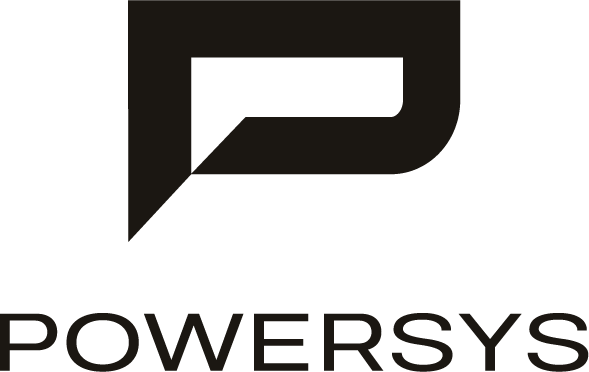Could you please introduce your company?
C&S group GmbH started in 1995 as an independent test house for CAN data link layer, physical layer and robustness tests. In the course of time we started offering also tests for LIN, SAE, FlexRay, AUTOSAR and are involved in many different consortiums now. In addition to that, today we conduct tests, simulations and consulting analyses for Automotive Ethernet and CAN with flexible data rate (CAN FD) as well. Furthermore, we generate evaluation methods to validate entire in-vehicle network topologies in the automotive industry and have developed a script-based automation to speed up the configuration of the simulator, the topology and ECU design, the signal post-processing and the presentation of the results. Due to the construction of this software, our development team got in contact with SABER for the first time. Nowadays, CAN(-FD), FlexRay and LIN are completely supported in our so-called INVIO-tool and established in the approval process of many OEMs all over the world.
What is the core business of your company?
Testing and consulting services as well as support in the development of new networking technologies in the area of automotive business.
Where did you first hear about SABER?
We have heard about SABER due to some general discussions between several OEMs. C&S as well as the OEMs in Germany recognized the benefit of simulation and together we have searched for the best implementation. With the opportunity of automatization, SABER gets more and more famous and popular for other European and Asian OEMs.
How long has your company been using SABER?
The first official license for the commercial utilization was acquired in 2003. The scope of SABER was reviewed and evaluated one or two years before with several test licenses and discussions between Synopsys and C&S.
What initially attracted you to this software?
SABER was the leading physical layer simulator for automotive network analyses in order to contribute to the development of new automotive network technologies.
What were your initial intentions for using SABER?
Automotive network analyses.
Has your use of the software evolved since then? What was the SABER impact on your work?
We started with small automotive topology designs made by hand in SKETCH. Over the years we analyzed Saber regarding its automation capabilities and thus, developed first automation scripts for measurements in CosmosScope. Finally, we developed a huge AIM script package for our simulation automation part in our software INVIO: from automatically loading of pre-created designs and test benches as well as simulation configuration and execution to automatically loading of plot files and doing measurements as needed for the automotive fieldbus analysis. We have developed validation criteria for CAN, CAN with partial networking, CAN FD, FlexRay and LIN.
Can you describe a specific project in which SABER had a key contribution on study time and accuracy of results?
In general, simulation and therefore the usage of SABER represents the basis in most of our consulting projects. The goal of the corresponding analysis is to get precise results regarding the behavior of the physical layer in an in-vehicle network as fast as possible. Additional to that, simulation allows representing the characteristics of real devices in corner cases, which means an extended analysis with included temperature conditions and production spread. The cost reduction and the broader analysis (compared to measurements in the laboratory) are only two key points that will make topology designs, individual investigations and the development and introduction of new technologies better than ever before. SABER is a great choice to use with INVIO because of its fastest performance for VHDL-AMS simulations and the realistic results. Every comparison between SABER simulation results and lab measurements shows perfect conformity in curve shape and by comparing the general communication result (error messages, bus off state, etc.).
Can you describe a specific study case in which SABER had a key contribution on study time and accuracy of results?
Due to the confidentiality obligation of our customers, we are not able to give any detailed information at this point. However, compared to complex measurements in the laboratory, the usage of SABER and our automation tool INVIO will always have a key contribution on study time and accuracy of the results. Nevertheless, please find below a common example for the validation of e.g. CAN FD: It is worth to mention that the maximum bit rate depends on the target topology and therefore each design needs to be validated at a certain bit rate. In this example a topology design with 11 nodes is considered (n = 11). At the same time, we usefully consider to evaluate the topology in 2 Mbit/s and 5 Mbit/s. Due to different temperature conditions within a vehicle as well as the consideration of corner case simulation, the measurement should be done in low, typical and high temperature condition. Due to the fact that we want to check the signal integrity of every node, we generate n² signals to analyze the behavior on each transmitter/receiver combination. For each signal, two measurements should be taken: one for the analogue signal and one for the digital RxD signal. The entire required process gives a total of nearly 1500 measurements only for the CAN FD data phase. The evaluation of the arbitration phase with some different scenarios results in additional 1452 measurements. Maybe a person can do this process alone or working in teams, but how much time and effort is required to generate results for this analysis? Not even mentioned the involved human error.
Now another perspective: supposed that one or more connections show many problems. You now need to modify the network and re-evaluate the new design. With an automated simulation, all the measurements are done in a few hours or even some minutes. With simulation, you already know the problems in the network and only the important parts could be measured in the laboratory at the end of the validation process to verify the result of the final topology design.
How did your company benefit from using SABER?
C&S and of course all of our customers get more and more knowledge and experience about the topology construction itself. The evaluation of in-vehicle networks during an early phase of the development process turns into a very important factor. This is caused by the dynamic behavior of a system, which cannot be predicted by manual calculations. The developers and designers are required to use simulation to analyze the network design for a robust layout and to investigate the influences of new components with two main goals: improving the signal quality and ensuring a correct communication with precise results even under worst case environment conditions. All of this is based on the usage of the SABER-tool and is therefore indispensable for many of our consulting projects.
Is there anything that SABER allows you to do that you could not do before?
SABER allows the analysis of hundreds of different automotive network variations in order to bring new networking technologies into the car in early design stages as well as corner case analyses, which would be very cost- and time-intensive if only done in a lab.


